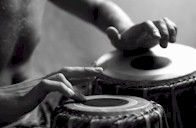
There is a difference between being materially comfortable--even affluent--and feeling significant in the world we inhabit. As they reached college age, the sons and daughters of the GIs who had triumphed over Hitler began proclaiming this distinction in a dramatic way.
While the student protests and other social turmoil of the late 1960s were often initiated by the sorts of “brainy” and “artsy” young people who had typically found themselves marginalized by Eisenhower-era America, they were soon joined by vast numbers of other Baby Boomers.
Simple statistics suggests that not all of these young people could meaningfully be considered social outcasts. Moreover, early radicals and later converts alike tended to come from upper-middle class families; they often shone academically; and they appeared highly capable of attaining success in the workplace. By any conventional standard, they were among the most fortunate of people. Yet a feeling of alienation was rampant among them. Why?
The causes of alienation that were most commonly articulated at the time do not fully explain what was going on during this watershed era of protest and dissent. For example, ending the war in Vietnam was probably the most significant of The Movement’s articulated political goals, but this certainly did not require dancing nude in the rain at Woodstock--any more than rearming the German Rhineland in the 1930s or cancelling its crushing World War I reparations payments required creating a new mythology of the Aryan race.
However, as the rise of European fascism demonstrated, the tribal imperative itself can drive forms of behavior in the modern era that might otherwise resist explanation.
It would certainly not be novel to describe the youth movement of the 1960s as tribalistic. Hair, the emblematic celebration of the spirit of the age, proudly described itself as “the American tribal love-rock musical.” And in his book Do It!, radical leader Jerry Rubin prominently featured a photograph of himself in war paint. In various ways, tribalism was emblazoned all over The Movement.
Here as with National Socialism, it can be revealing to shift our gaze somewhat from the things people were saying at the time, and might rationally have expected their social movement to accomplish, and spend a bit more time dealing with how participating in this form of neo-tribalism made them feel. In an inquiry of this type, matters of style and imagery sometimes speak more eloquently than anything that was ever overtly expressed, or consciously thought.


